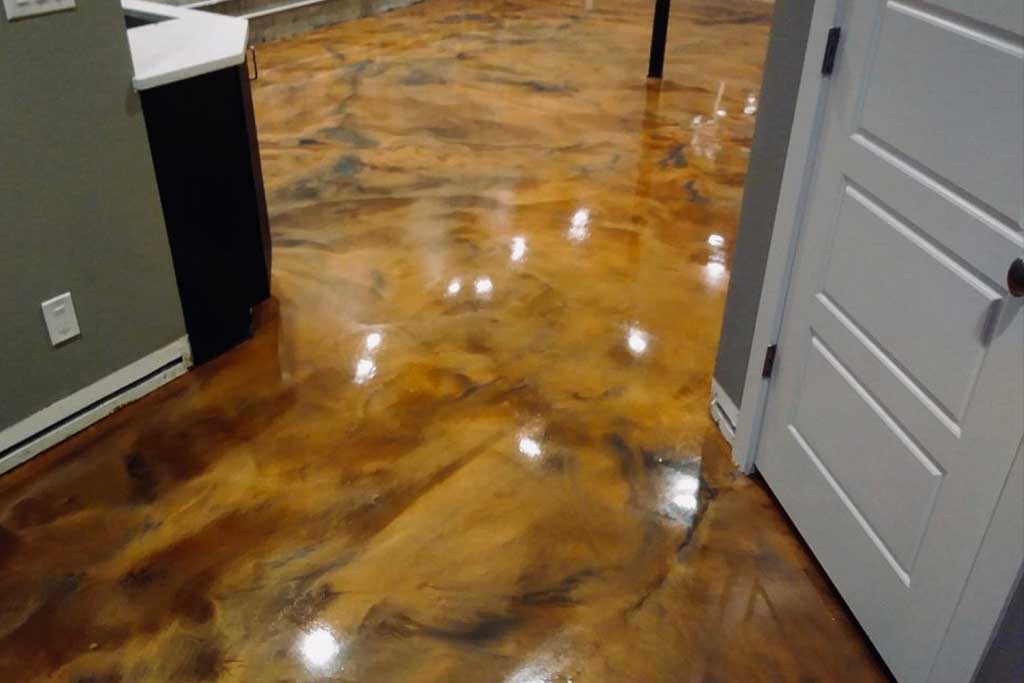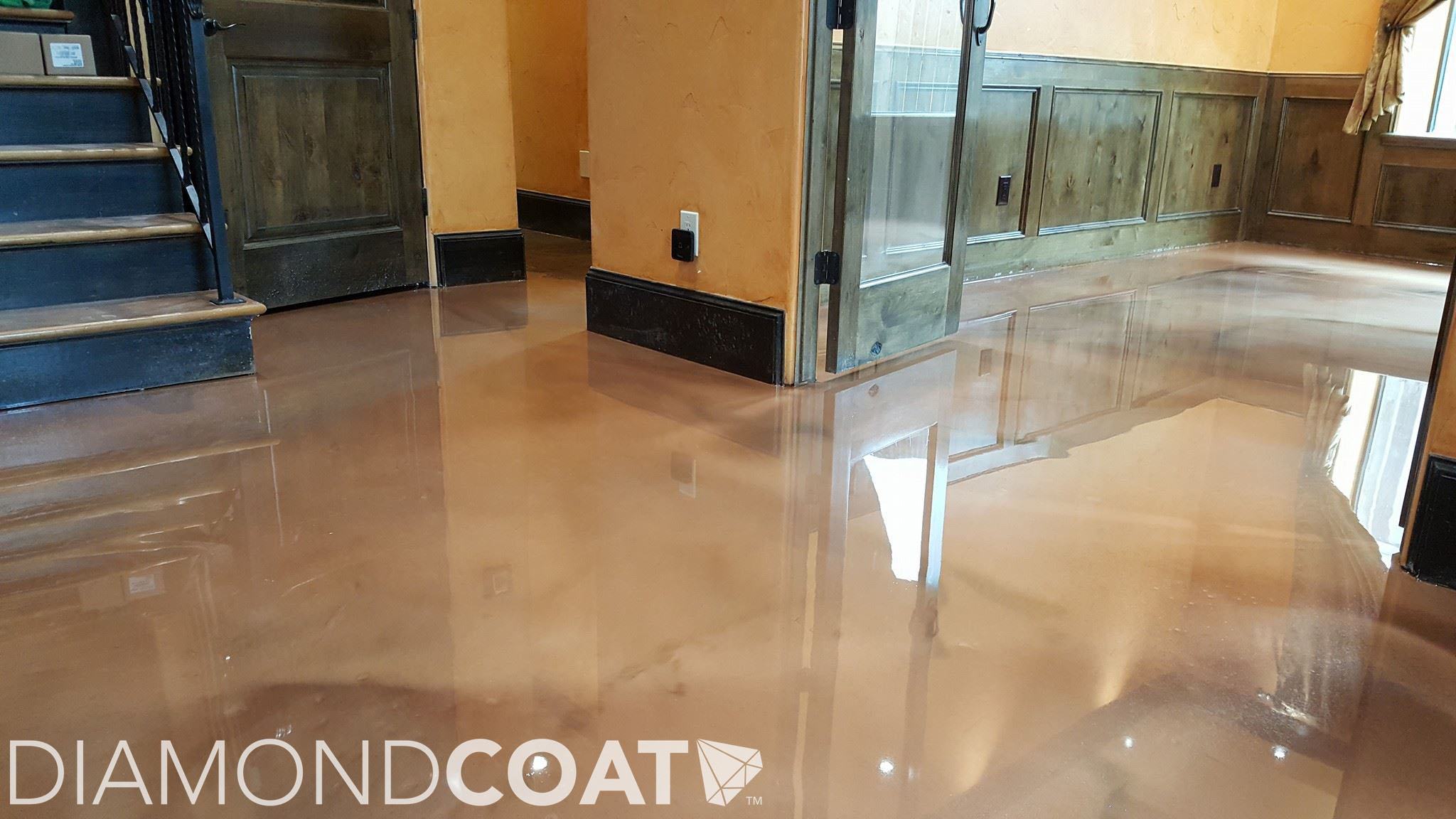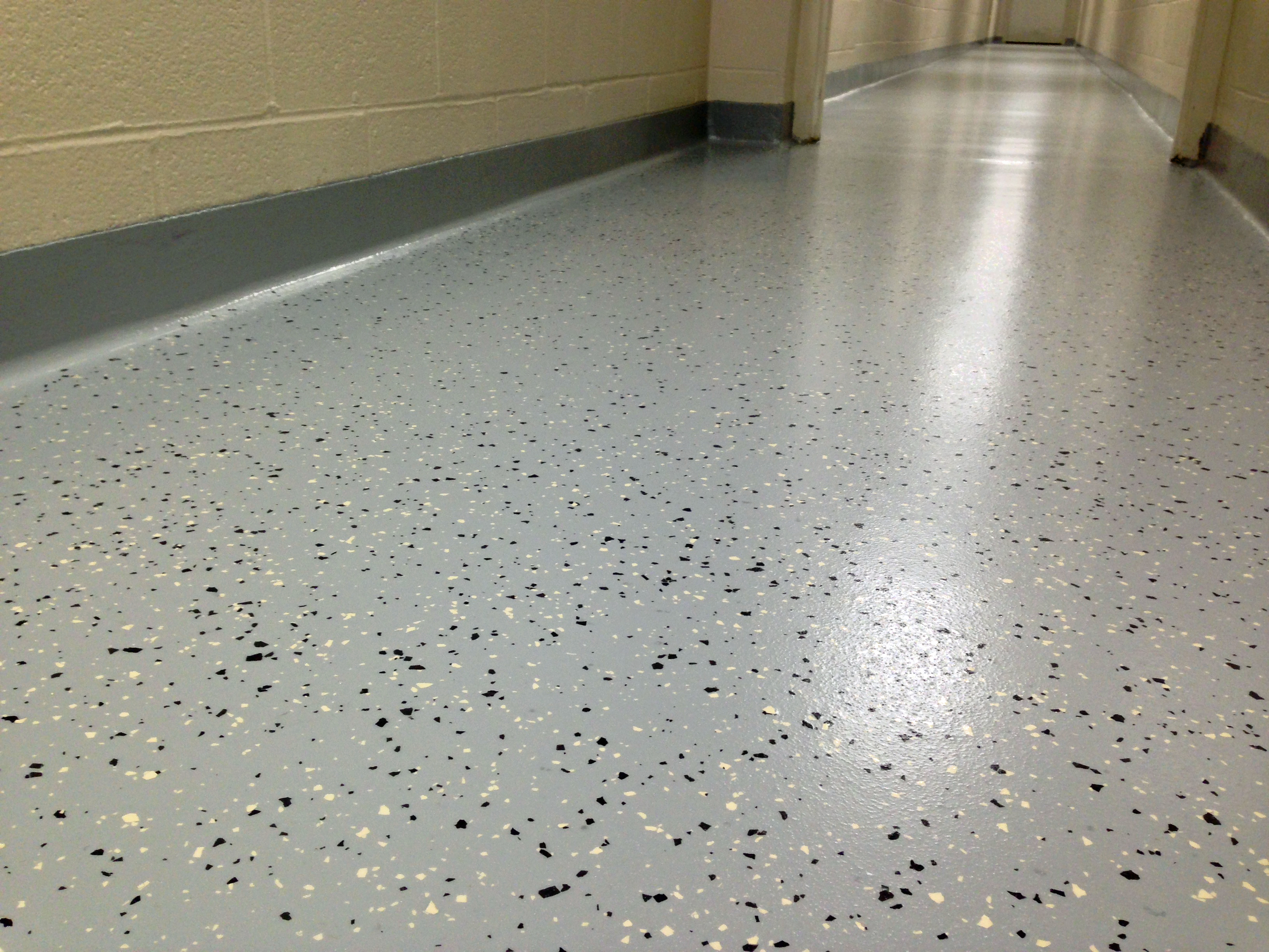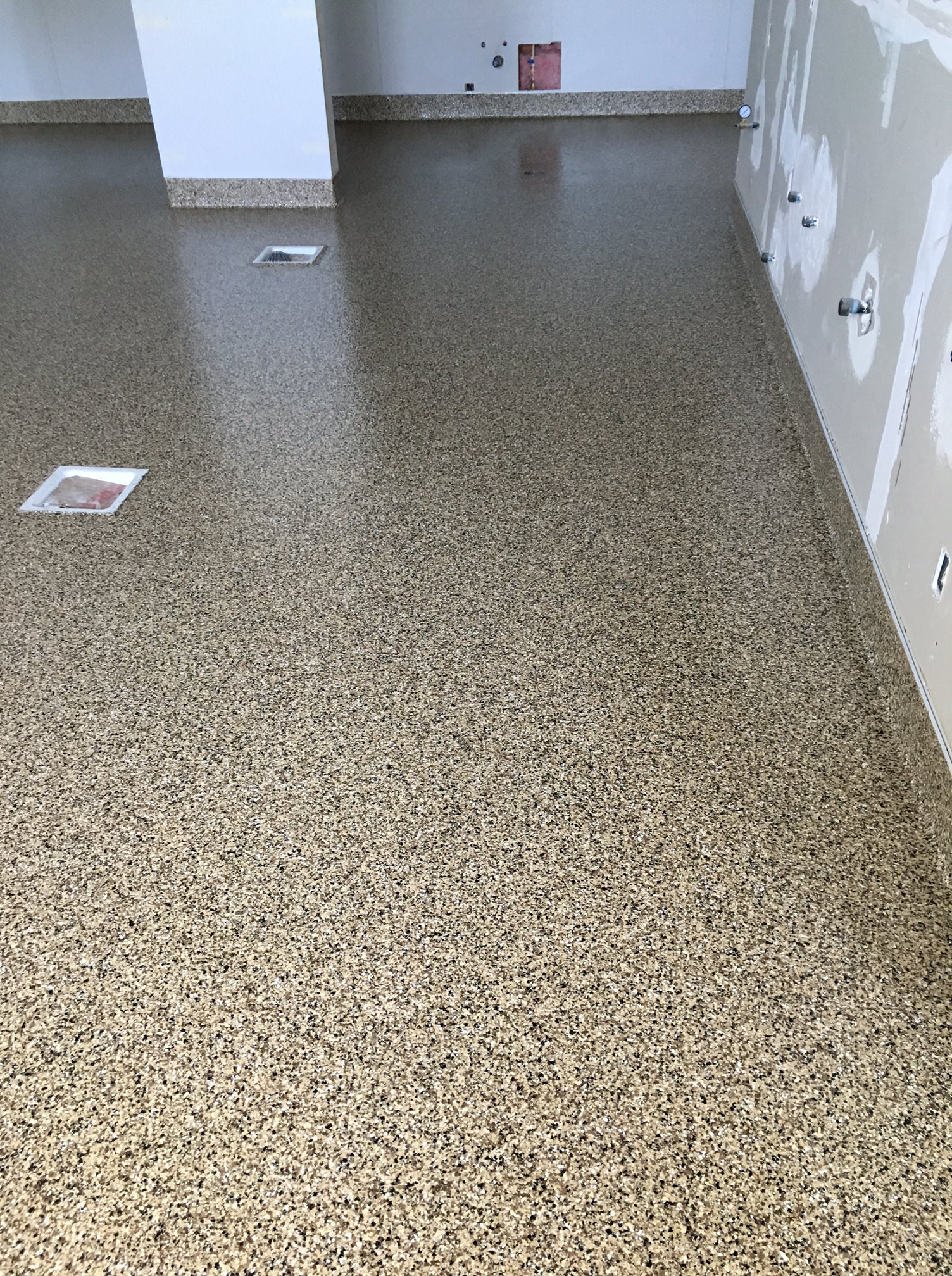Epoxy flooring has gained popularity in both residential and commercial settings due to its durability, aesthetic appeal, and relatively low maintenance requirements. However, like any flooring material, safety concerns are paramount. Let’s discuss different aspects of epoxy floors, including their safety in terms of health, environmental impact, installation process, and usage in different settings. We’ll also address common mistakes to avoid and answer frequently asked questions to provide a thorough understanding of epoxy flooring safety.
Understanding Epoxy Flooring
- What is Epoxy Flooring? Epoxy flooring is a type of floor coating made from a mixture of resin and hardener. When these two components are combined, they form a rigid plastic material that is strong, durable, and bonds exceptionally well to a variety of substrates. This makes epoxy flooring an excellent choice for areas that require a robust and long-lasting surface.
- Types of Epoxy Flooring: There are several types of epoxy flooring, each designed for specific applications. The most common types include self-leveling epoxy, which provides a smooth and seamless surface; epoxy mortar, which is highly durable and ideal for heavy-duty environments; and epoxy terrazzo, which is used for decorative purposes due to its aesthetic appeal. Each type has its own set of benefits and considerations regarding safety and performance.
- Applications of Epoxy Flooring: Epoxy flooring is versatile and used in various settings, including residential garages, commercial kitchens, warehouses, hospitals, and even in some retail spaces. Its ability to withstand heavy traffic, and chemical spills, and its aesthetic versatility make it a popular choice across different industries. Understanding where epoxy flooring is typically used can help determine its suitability and safety for your specific needs.
- Durability and Longevity: One of the key benefits of epoxy flooring is its durability. When properly installed and maintained, epoxy floors can last many years without showing signs of wear and tear. This durability translates to safety, as a well-maintained floor reduces the risk of accidents caused by cracks or uneven surfaces. However, it is crucial to ensure that the epoxy is applied correctly to achieve its maximum lifespan.
- Aesthetic Appeal: Epoxy floors are not only durable but also visually appealing. They come in a wide range of colors, patterns, and finishes, allowing for customization to match any decor. This aesthetic flexibility makes epoxy flooring a preferred choice for spaces where appearance is as important as functionality, such as showrooms and retail environments. The ability to create a non-slip surface adds to the safety factor, particularly in areas prone to spills.
- Cost Considerations: The cost of epoxy flooring can vary significantly depending on the type of epoxy used, the area to be covered, and the complexity of the installation. While epoxy flooring may have a higher upfront cost compared to other flooring options, its longevity and low maintenance requirements can result in cost savings over time. Additionally, understanding the cost implications can help in planning and budgeting for both installation and potential future repairs or upgrades.
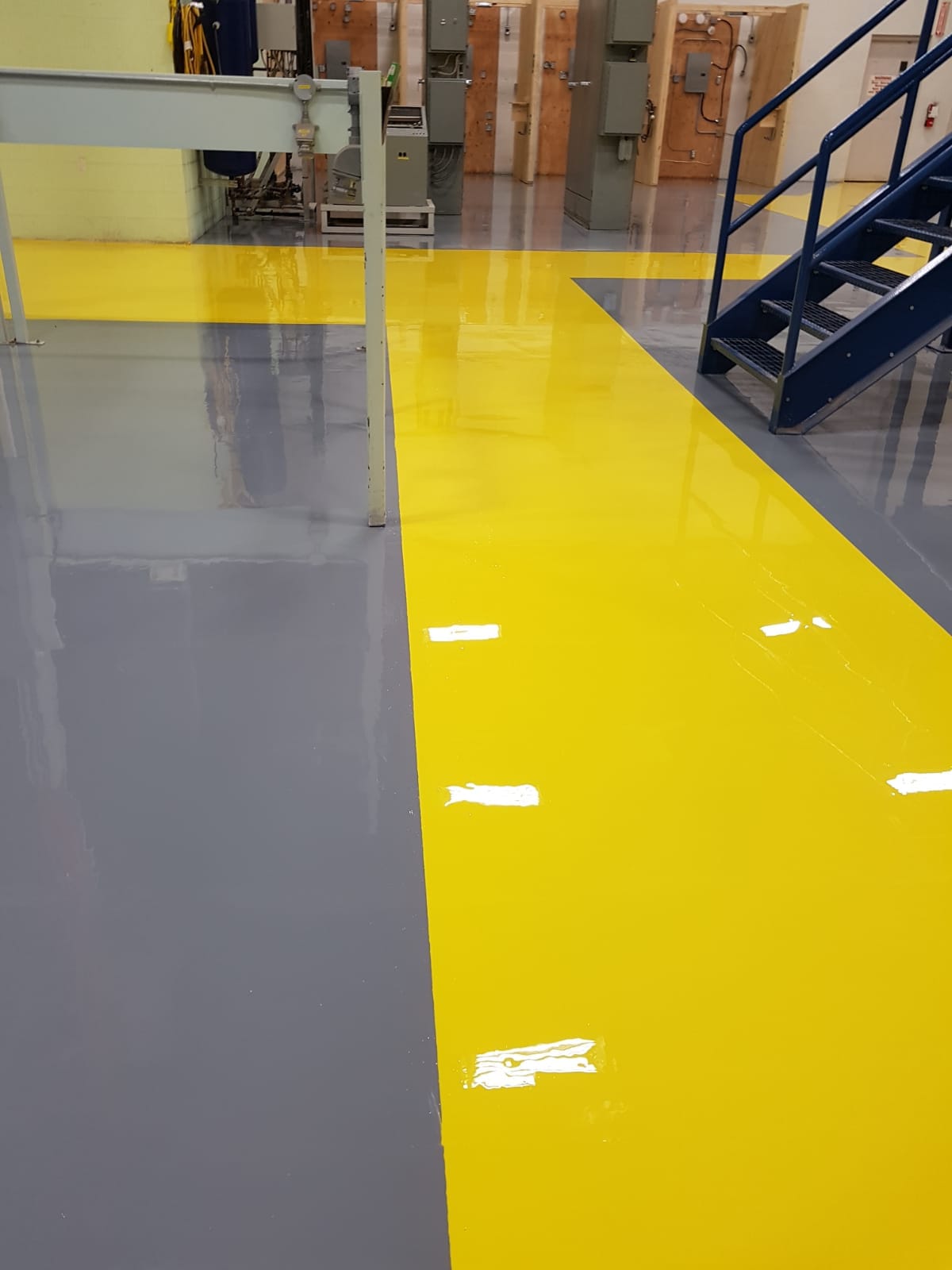
Health and Safety Concerns
Chemical Exposure
One of the primary concerns with epoxy flooring is the potential for chemical exposure during installation. Epoxy resin and hardeners contain volatile organic compounds (VOCs) that can emit fumes. Prolonged exposure to these fumes can cause respiratory issues, skin irritation, and other health problems. It is essential to ensure proper ventilation during installation and to use personal protective equipment (PPE) to mitigate these risks.
Off-Gassing
Off-gassing refers to the release of VOCs from the epoxy flooring even after it has cured. This can be a concern in enclosed spaces, as prolonged exposure to VOCs can have health implications. Choosing low-VOC or VOC-free epoxy products can significantly reduce the risk of off-gassing. Additionally, allowing adequate curing time and ensuring proper ventilation can further mitigate these concerns.
Slip Resistance
Safety in terms of slip resistance is another important factor to consider with epoxy flooring. While epoxy floors can be made to be non-slip, it is crucial to ensure that the correct type of epoxy and texture is used, particularly in areas prone to moisture or spills. Additives such as sand or aluminum oxide can be mixed into the epoxy to enhance its slip-resistant properties.
Fire Resistance
Epoxy floors are generally considered to be fire-resistant, as the cured epoxy does not ignite easily. However, it is essential to understand the fire rating of the specific epoxy product being used. In areas where fire safety is a significant concern, such as commercial kitchens or industrial settings, choosing an epoxy with a high fire resistance rating is crucial.
Allergies and Sensitivities
Some individuals may be allergic or sensitive to the chemicals used in epoxy flooring. Symptoms can range from mild skin irritation to more severe respiratory issues. It is important to identify and address any potential allergies or sensitivities before installation. Using hypoallergenic products and ensuring proper protective measures can help reduce the risk of adverse reactions.
Long-Term Health Effects
Long-term exposure to the chemicals in epoxy flooring is a concern, particularly for workers involved in frequent installations. Continuous exposure to high levels of VOCs and other chemicals can have cumulative health effects. Implementing strict safety protocols, using low-VOC products, and providing regular health screenings for workers can help mitigate these risks.
Environmental Impact
Production and Sustainability
The production of epoxy flooring involves the use of petrochemicals, which raises concerns about sustainability. However, advancements in green chemistry are leading to the development of more environmentally friendly epoxy products. Some manufacturers are now producing epoxies with lower environmental impact by using renewable resources and reducing the use of harmful chemicals.
Installation and Waste
The installation process of epoxy flooring can generate waste, particularly if mistakes are made or excess material is mixed. Proper planning and measurement can minimize waste. Additionally, some manufacturers offer recycling programs for unused epoxy materials. Reducing waste not only benefits the environment but also lowers the overall cost of the project.
Longevity and Durability
The durability and longevity of epoxy flooring contribute positively to its environmental impact. A longer-lasting floor reduces the need for frequent replacements, thereby conserving resources and reducing waste. Choosing high-quality epoxy products and ensuring proper maintenance can maximize the lifespan of the flooring, enhancing its environmental benefits.
VOC Emissions
As mentioned earlier, VOC emissions are a significant environmental concern with epoxy flooring. Choosing low-VOC or VOC-free products can greatly reduce the environmental impact. Additionally, proper ventilation during installation and curing can help minimize the release of VOCs into the environment. Being mindful of VOC emissions is essential for both health and environmental safety.
Disposal and Recycling
Disposing of epoxy flooring materials can be challenging due to their chemical composition. It is crucial to follow local regulations and guidelines for the disposal of epoxy waste. Some epoxy products can be recycled, and manufacturers may offer take-back programs to ensure proper disposal. Recycling and responsible disposal practices can significantly reduce the environmental impact of epoxy flooring.
Green Certifications
Look for epoxy flooring products that have received green certifications, such as LEED (Leadership in Energy and Environmental Design) or Green Seal. These certifications indicate that the product meets specific environmental and health standards. Choosing certified products can provide assurance that you are making an environmentally responsible choice.
Installation Process
Surface Preparation
Proper surface preparation is critical for the successful installation of epoxy flooring. The surface must be clean, dry, and free of any contaminants such as oil, grease, or dirt. This may involve grinding, shot blasting, or acid etching to create a suitable profile for the epoxy to adhere to. Skipping or inadequately performing surface preparation can lead to adhesion issues and a shorter lifespan for the flooring.
Mixing and Application
Mixing the epoxy resin and hardener correctly is crucial to achieve the desired properties of the flooring. Incorrect mixing ratios or inadequate mixing can result in improper curing and compromised performance. Follow the manufacturer’s instructions carefully, and use the appropriate tools to ensure thorough mixing. Proper application techniques, such as using rollers or squeegees, are also essential for a smooth and even finish.
Ventilation
Ensuring adequate ventilation during the installation process is vital to minimize exposure to harmful fumes. Proper ventilation helps dissipate VOCs released during mixing and application. Using fans, opening windows, and wearing respirators can help protect installers from inhaling potentially harmful chemicals. Ventilation is crucial for both the safety of the installers and the occupants of the building.
Curing Time
Allowing sufficient curing time is essential for the epoxy to achieve its full strength and durability. Depending on the product and environmental conditions, curing can take anywhere from a few hours to several days. Avoid walking on or placing objects on the floor until it is fully cured to prevent damage. Proper curing is critical for the long-term performance and safety of the epoxy floor.
Temperature and Humidity Control
Controlling the temperature and humidity during installation is important to ensure proper curing and adhesion. Extreme temperatures or high humidity can affect the chemical reaction of the epoxy, leading to issues such as improper curing, bubbling, or cracking. Follow the manufacturer’s guidelines for optimal temperature and humidity conditions during installation.
Post-Installation Inspection
After the epoxy floor has cured, conduct a thorough inspection to identify any defects or issues. Check for areas with uneven thickness, bubbles, or inadequate adhesion. Addressing these issues promptly can prevent further problems and ensure the longevity of the flooring. A well-executed installation, followed by a careful inspection, sets the stage for a safe and durable epoxy floor.
Safety in Different Settings
Residential Settings
In residential settings, epoxy flooring is often used in garages, basements, and even kitchens. Its durability and ease of cleaning make it a practical choice for these areas. However, it is essential to ensure that the epoxy used is low-VOC or VOC-free to minimize indoor air quality issues. Slip resistance is also a consideration, particularly in areas prone to spills.
Commercial Settings
Commercial settings, such as retail stores and restaurants, benefit from the aesthetic appeal and durability of epoxy flooring. In these environments, safety concerns include slip resistance and fire safety. Ensuring that the epoxy meets safety standards and has the appropriate certifications for commercial use is crucial. Regular maintenance and inspection can help maintain a safe environment for customers and employees.
Industrial Settings
In industrial settings, epoxy flooring is often used due to its ability to withstand heavy machinery, chemical spills, and high traffic. Safety concerns in these environments include chemical resistance, slip resistance, and durability. Choosing an epoxy product specifically designed for industrial use and ensuring proper installation and maintenance can mitigate these risks.
Healthcare Settings
Epoxy flooring is a popular choice in healthcare settings such as hospitals and clinics due to its seamless and hygienic surface. Safety concerns include ensuring that the epoxy is hypoallergenic and resistant to microbial growth. Using low-VOC products and ensuring proper installation and maintenance can help create a safe and sterile environment for patients and staff.
Educational Settings
In educational settings, such as schools and universities, epoxy flooring is used for its durability and ease of cleaning. Safety considerations include slip resistance and ensuring that the epoxy is low-VOC to protect indoor air quality. Regular maintenance and prompt attention to any damage or wear can help maintain a safe environment for students and staff.
Public Spaces
Public spaces, such as airports, malls, and convention centers, benefit from the durability and aesthetic appeal of epoxy flooring. Safety concerns include ensuring that the flooring is slip-resistant and meets fire safety standards. Proper installation, regular maintenance, and adherence to safety regulations are crucial to ensure the safety of the large number of people using these spaces.
Common Mistakes to Avoid
Inadequate Surface Preparation
One of the most common mistakes in epoxy flooring installation is inadequate surface preparation. Failing to properly clean and prepare the surface can lead to adhesion issues and a shorter lifespan for the flooring. Ensure that the surface is free of contaminants and has the appropriate texture for the epoxy to bond effectively.
Incorrect Mixing Ratios
Incorrect mixing ratios of the epoxy resin and hardener can result in improper curing and compromised performance. Always follow the manufacturer’s instructions carefully and use the appropriate tools to ensure thorough mixing. Inaccurate mixing can lead to issues such as bubbling, peeling, or an uneven finish.
Skipping Ventilation
Skipping proper ventilation during installation can expose installers to harmful fumes and affect indoor air quality. Ensure adequate ventilation by using fans, opening windows, and wearing respirators. Proper ventilation helps dissipate VOCs and protects both installers and building occupants from potential health risks.
Insufficient Curing Time
Allowing insufficient curing time can compromise the durability and performance of the epoxy flooring. Avoid walking on or placing objects on the floor until it is fully cured. Follow the manufacturer’s guidelines for curing time to ensure that the epoxy achieves its full strength and durability.
Ignoring Temperature and Humidity Conditions
Ignoring temperature and humidity conditions during installation can lead to issues such as improper curing, bubbling, or cracking. Follow the manufacturer’s guidelines for optimal temperature and humidity conditions. Controlling these environmental factors is crucial for the successful installation and long-term performance of epoxy flooring.
Failing to Conduct Post-Installation Inspections
Failing to conduct post-installation inspections can result in undetected defects or issues that may worsen over time. After the epoxy floor has cured, perform a thorough inspection to identify any areas with uneven thickness, bubbles, or inadequate adhesion. Addressing these issues promptly can prevent further problems and ensure the longevity of the flooring.
Are epoxy floors safe for homes with pets?
Epoxy floors can be a safe and practical choice for homes with pets. They are durable, easy to clean, and resistant to scratches and stains. However, it is important to ensure that the epoxy is low-VOC or VOC-free to protect indoor air quality. Additionally, applying a slip-resistant coating can help prevent pets from slipping on the surface.
How long does it take for epoxy floors to cure?
The curing time for epoxy floors can vary depending on the product and environmental conditions. Typically, epoxy floors require 24 to 72 hours to cure fully. However, it is important to follow the manufacturer’s guidelines for curing time. Allowing sufficient curing time ensures that the epoxy achieves its full strength and durability.
Can epoxy floors be installed in areas with high moisture?
Epoxy floors can be installed in areas with high moisture, but it is essential to address moisture issues before installation. High moisture levels can affect the adhesion and curing of the epoxy. Using a moisture barrier and ensuring proper surface preparation can help mitigate these issues. Additionally, choosing an epoxy product designed for high-moisture environments can improve performance.
Are epoxy floors resistant to chemicals?
Epoxy floors are highly resistant to a wide range of chemicals, making them an excellent choice for industrial and commercial settings. However, the level of chemical resistance can vary depending on the specific epoxy product used. It is important to choose an epoxy that is designed for chemical resistance if the flooring will be exposed to harsh chemicals.
How do I maintain and clean epoxy floors?
Maintaining and cleaning epoxy floors is relatively simple. Regular sweeping or vacuuming can remove dirt and debris, while damp mopping with a mild detergent can clean the surface. Avoid using harsh chemicals or abrasive cleaning tools, as they can damage the epoxy. Regular maintenance and prompt attention to spills can help preserve the appearance and performance of the flooring.
Can epoxy floors be repaired if damaged?
Yes, epoxy floors can be repaired if damaged. Small scratches and chips can often be fixed with a patching compound or epoxy filler. For more extensive damage, it may be necessary to sand down the affected area and reapply a new coat of epoxy. It is important to follow the manufacturer’s guidelines for repair to ensure a seamless and durable result.
Related Posts:
